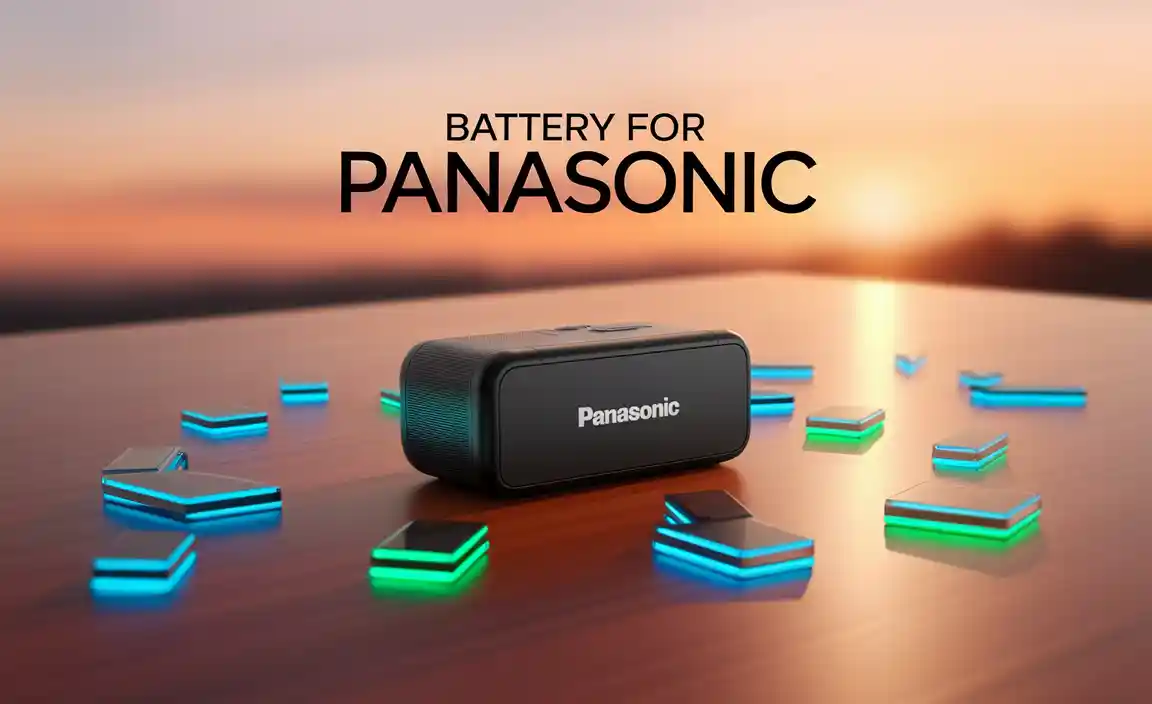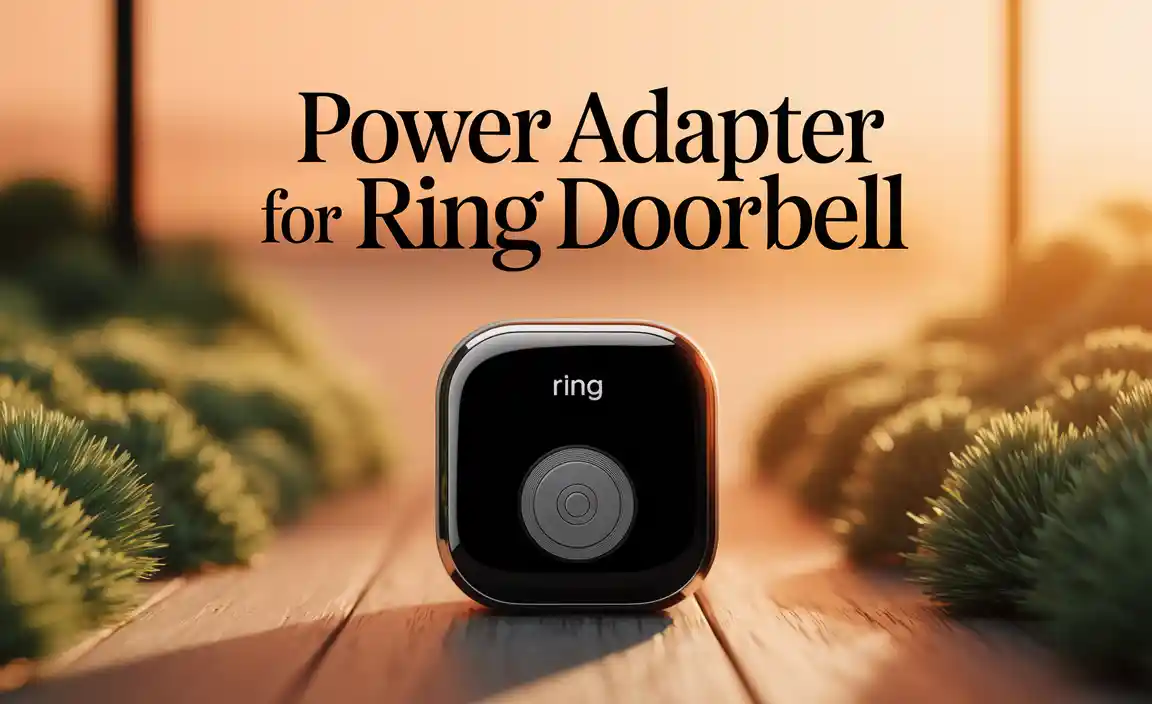Cheap Stop-Start Battery for Winter: Essential Choice
Yes, you can find reliable, affordable stop-start batteries perfect for winter driving. This guide shows you how to choose the right one without breaking the bank, ensuring your car starts reliably even in the cold. We’ll cover everything from understanding battery types to simple maintenance, giving you peace of mind on the road.**
Winter weather can be tough on your car, especially its battery. Cold temperatures make engines harder to start, and if your car has a stop-start system, your battery works even harder. It’s frustrating when your car won’t start on a chilly morning. But don’t worry! Choosing the right battery doesn’t have to be complicated or expensive. We’ll walk through understanding what makes a battery “stop-start” ready and how to find a budget-friendly option that keeps you going all winter.
Why Winter is Hard on Stop-Start Batteries
Your car’s battery is like its heart, providing the power to start the engine and run all its electronics. A stop-start system, also called an auto stop-start or idle-stop system, is designed to save fuel and reduce emissions. It automatically shuts off the engine when you stop (like at a traffic light) and restarts it when you lift your foot off the brake or clutch.
This constant stopping and starting puts extra strain on the battery. In winter, this strain is amplified. Cold weather affects battery performance in a few ways:
- Reduced Power: Cold temperatures slow down the chemical reactions inside a battery. This means it has less power to crank the engine.
- Thicker Oil: Engine oil becomes thicker when it’s cold, making it harder for the starter motor and thus the battery to turn the engine over.
- More Electrical Load: In winter, you’re likely using more electronics. Think heated seats, defrosters, headlights, and radios. All these draw power from the battery.
For stop-start systems, the battery needs to be robust enough to handle these conditions and the frequent engine restarts. A standard battery might not be up to the task, especially when it’s older or weakened by summer heat.
What is a Stop-Start Battery?
Not all car batteries are the same. Batteries designed for stop-start vehicles are built differently to withstand the demands of the system. They are typically one of two types:
- Enhanced Flooded Battery (EFB): These are a step up from standard flooded batteries. EFB batteries are better at handling deep discharges (when the battery’s power level drops significantly) and have a longer cycle life, meaning they can undergo more charge-discharge cycles. They are often used in cars with less complex stop-start systems.
- Absorbent Glass Mat (AGM) Battery: AGM batteries are premium batteries. They use a microfiber glass mat to absorb the electrolyte. This makes them very strong, resistant to vibration, and capable of handling a lot of deep discharges and quick charging. They are typically found in cars with more advanced stop-start systems, regenerative braking, or high electrical demands.
Using a standard battery in a car designed for EFB or AGM can lead to premature failure. The battery won’t be able to cope with the demands, and your stop-start system may stop working, or the battery could fail completely.
Why “Cheap” Doesn’t Always Mean “Bad”
When we talk about a “cheap stop-start battery,” we’re usually looking for a good balance between cost and performance. It doesn’t mean buying the absolute cheapest option available without considering its quality. Instead, it means finding a reliable battery that offers good value for money.
Here’s why finding a good, affordable option is possible:
- Brand Competition: The battery market has many brands. Some offer excellent quality without the premium price tag of the most well-known names.
- Technological Advancements: Battery technology is always improving. Newer, more efficient manufacturing processes can lead to more affordable batteries.
- Focus on Your Needs: If your car has a basic stop-start system, an EFB battery might be all you need. These are generally less expensive than AGM batteries.
The key is to understand what your car requires and then research brands that meet those needs at a reasonable price point.
Choosing the Right Battery: Key Factors
Before you buy, consider these important points to ensure you get the best battery for your money and your car:
1. Check Your Car’s Requirements
This is the most critical step. Your car manufacturer knows best what type of battery your vehicle needs. Look for this information in:
- Your car’s owner’s manual.
- A sticker on the old battery itself.
- Online battery finder tools on reputable auto parts store websites.
You’ll need to know if you need an EFB or AGM battery, its physical size (group size), and its power specifications (like Cold Cranking Amps – CCA).
2. Cold Cranking Amps (CCA)
CCA measures a battery’s ability to start an engine in cold temperatures. A higher CCA rating means the battery can deliver more power at low temperatures. For winter, especially in colder climates, a higher CCA rating is generally better. Check your manual, but aim for a rating at or above the manufacturer’s recommendation.
3. Reserve Capacity (RC)
RC tells you how long a fully charged battery can run essential accessories if the alternator fails. While not as critical as CCA for starting, a decent RC is good for overall reliability.
4. Battery Type (EFB vs. AGM)
As mentioned, make sure you get the correct type. Using the wrong type can damage the battery or the car’s electrical system. If your car came with an AGM battery, it’s usually best to replace it with another AGM battery, even if it’s a more affordable brand.
5. Brand Reputation and Warranty
Even with “cheap” options, look for brands with a decent reputation. Read online reviews. A good warranty is also a sign of a manufacturer’s confidence in their product. Look for at least a 2-3 year warranty. Some affordable brands offer surprisingly long warranties.
6. Where to Buy
Consider buying batteries from:
- Auto Parts Stores: They often have a wide selection, staff who can help, and a decent warranty.
- Online Retailers: Can sometimes offer lower prices, but check shipping costs and warranty claim processes. Need to be sure about compatibility.
- Independent Garages: Might offer value-focused options and can install it for you.
Comparing EFB and AGM Batteries
Here’s a quick look at how EFB and AGM batteries stack up, which can help you understand why one might be a more affordable choice for your specific needs.
| Feature | EFB (Enhanced Flooded Battery) | AGM (Absorbent Glass Mat) |
|---|---|---|
| Price Range | Generally lower; often more affordable than AGM. | Generally higher; premium option. |
| Stop-Start Capability | Good; suitable for basic start-stop systems. | Excellent; handles frequent starts, deep discharges, and high electrical demands. |
| Durability | Better than standard lead-acid; handles some deep cycling. | Very durable; excellent resistance to vibration and deep discharge. |
| Recharge Speed | Moderate. | Faster; can accept charge more quickly, beneficial for regenerative braking. |
| Car Compatibility | Cars with simpler stop-start systems. | Cars with advanced stop-start, high electrical loads, or regenerative braking. |
| Maintanence | Sealed, similar to standard batteries (but often cannot be topped up). | Completely sealed and maintenance-free. |
If your car has a basic stop-start feature and no other high-drain electrical systems, an EFB battery is often the more budget-friendly and perfectly suitable choice. Many affordable brands offer reliable EFB batteries that can be a “cheap stop-start battery for winter” solution.
Finding Affordable, Reliable Brands
While specific recommendations can change, here are some brands often known for offering good value. Always check for current models and reviews:
- Bosch: Known for quality, they offer various tiers, including more budget-friendly options that still meet high standards. Their S4 and S5 ranges often have EFB and AGM variants.
- Exide: A major manufacturer with a strong presence. They produce quality batteries across different price points, including series suitable for stop-start.
- Varta: Often found as original equipment. They have ranges like Silver Dynamic (AGM) and Blue Dynamic (EFB) that offer good performance for their price.
- Yuasa: Well-regarded, especially for EFB and AGM technology. They offer durable options that can be competitive on price.
- Duracell (Car Batteries): While known for smaller batteries, Duracell also makes automotive batteries, often associated with good lifespan and reasonable pricing.
- Store Brands: Many large auto parts chains (like Halfords in the UK, AutoZone or Advance Auto Parts in the US) have their own branded batteries. These are often manufactured by major players and can offer excellent value with good warranties.
Remember to always verify that the specific model from these brands meets your car’s EFB or AGM requirement.
DIY Battery Installation: A Basic Guide
Replacing your car battery can be a straightforward DIY job, saving you labor costs. However, safety is paramount.
Tools You’ll Likely Need:
- Wrench or socket set (commonly 10mm, 13mm, or 1/2 inch).
- Battery terminal cleaner brush or wire brush.
- Gloves and eye protection.
- A small wire or memory saver (optional, to keep car settings).
Safety First!
Car batteries contain corrosive acid and can release flammable hydrogen gas. Always:
- Wear safety glasses and gloves.
- Work in a well-ventilated area.
- Never smoke or allow open flames near the battery.
- Make sure the engine is off and the key is out of the ignition.
- Always disconnect the negative (-) terminal first, and reconnect it last. This prevents short circuits.
Step-by-Step Installation:
- Locate the Battery: It’s usually under the hood, but some cars have it in the trunk or under a seat.
- Identify Terminals: You’ll see a positive (+) and a negative (-) terminal. The positive terminal might have a red cover.
- Disconnect the Negative Cable FIRST: Use your wrench to loosen the nut on the negative terminal clamp. Wiggle the clamp off the terminal post. Move the cable away so it can’t accidentally touch the terminal.
- Disconnect the Positive Cable: Now, loosen and remove the positive terminal clamp.
- Remove Hold-Down Clamp: Batteries are secured by a bracket or strap at the base or top. Remove this to free the battery.
- Lift Out the Old Battery: Batteries are heavy! Lift with your legs, not your back.
- Clean the Tray and Terminals: Use a wire brush to clean any corrosion from the battery tray and inside the terminal clamps. A dedicated battery terminal cleaner spray (check if it’s safe for all battery types) can help. Visit NHTSA for car battery safety tips.
- Install the New Battery: Carefully place the new battery into the tray, ensuring it’s oriented correctly (positive and negative terminals in the right spots).
- Secure Hold-Down Clamp: Reinstall the bracket and tighten it securely. The battery should not move.
- Connect the Positive Cable FIRST: Place the positive clamp onto the positive terminal post and tighten it.
- Connect the Negative Cable LAST: Place the negative clamp onto the negative terminal post and tighten it.
- Check Connections: Ensure both terminals are tight and secure.
- Start the Car: Start your engine to test the new battery. The stop-start system might take a short while to re-calibrate.
If you’re unsure about any step, it’s always best to have a professional do it. You can often find good installation services at local garages or even at the auto parts store where you buy the battery.
Looking After Your Stop-Start Battery in Winter
A quality battery, even an affordable one, will last longer and perform better with a little care, especially during winter.
- Keep it Clean: Regularly clean the battery terminals and the top of the battery. Corrosion can build up, hindering its performance. A mixture of baking soda and water can help neutralize acid residue, followed by a rinse with clean water. Ensure no water enters the battery vents if it has them.
- Check Connections: Make sure the battery cables are tight. Loose connections can cause all sorts of electrical problems.
- Avoid Deep Discharges: Try not to let the battery drain completely. If you’re doing a lot of short trips where the engine doesn’t run long enough to fully recharge the battery, consider taking it for a longer drive occasionally, or even using a battery charger. You can find information on battery chargers for vehicles at resources like FuelEconomy.gov, which discusses vehicle efficiency related to engine operation.
- Use a Battery Tender/Charger: If your car sits for long periods, especially in winter, a smart battery charger or trickle charger can keep the battery topped up. These are relatively inexpensive and can significantly extend battery life. They can charge various battery types for phones, power banks, and cars.
- Monitor Stop-Start System: If your car’s stop-start system starts acting up (e.g., not engaging, being slow to restart), it could be a sign the battery is weakening, even if the car still starts.
When to Replace Your Battery
Car batteries don’t last forever. They typically offer 3-5 years of service, though this can vary based on climate, usage, and battery quality. Be on the lookout for these signs that it might be time for a new battery:
- Slow Engine Crank: The engine sounds sluggish when you try to start it.
- Dim Headlights: Headlights appear dimmer than usual, especially when the engine is idling.
- Warning Light: The battery warning light on your dashboard illuminates.
- Battery Age: If your battery is over 3-4 years old, it’s wise to have it tested, especially before winter.
- Swollen Case: The battery case appears swollen or bloated, which can happen due to overcharging or extreme heat. This is a critical sign of failure.
- Foul Smell: A rotten egg smell might indicate a leaking or damaged battery.
Most auto parts stores offer free battery testing. This can give you an accurate reading of your battery’s health and help you decide if replacement is needed.
Frequently Asked Questions (FAQs)
Q1: Can I use a regular car battery in a car with a stop-start system?
Generally, no. Cars with stop-start systems require EFB or AGM batteries. A regular battery won’t be able to handle the frequent starting and deep discharges, leading to premature failure. Always check your car’s manual.
Q2: How do I know if I need an EFB or an AGM battery?
Check your car’s owner’s manual or look for markings on the old battery. Manufacturers specify the required technology. AGM batteries are usually for more advanced systems, while EFB is for simpler stop-start functions. If your car originally had an AGM, replace it with an AGM.
Q3: What is the best time of year to buy a car battery?
Prices can fluctuate. While there isn’t one “best” time, you might find sales or promotions during major holiday periods or at the transition into colder weather when demand increases. It’s always worth comparing prices from different retailers.
Q4: How long should a stop-start battery last?
A quality stop-start battery (EFB or AGM) should last between 3 to 5 years, sometimes longer. The lifespan depends on driving habits, climate, battery quality, and maintenance. Winter conditions can reduce lifespan if the battery is not robust or well-maintained.</p






